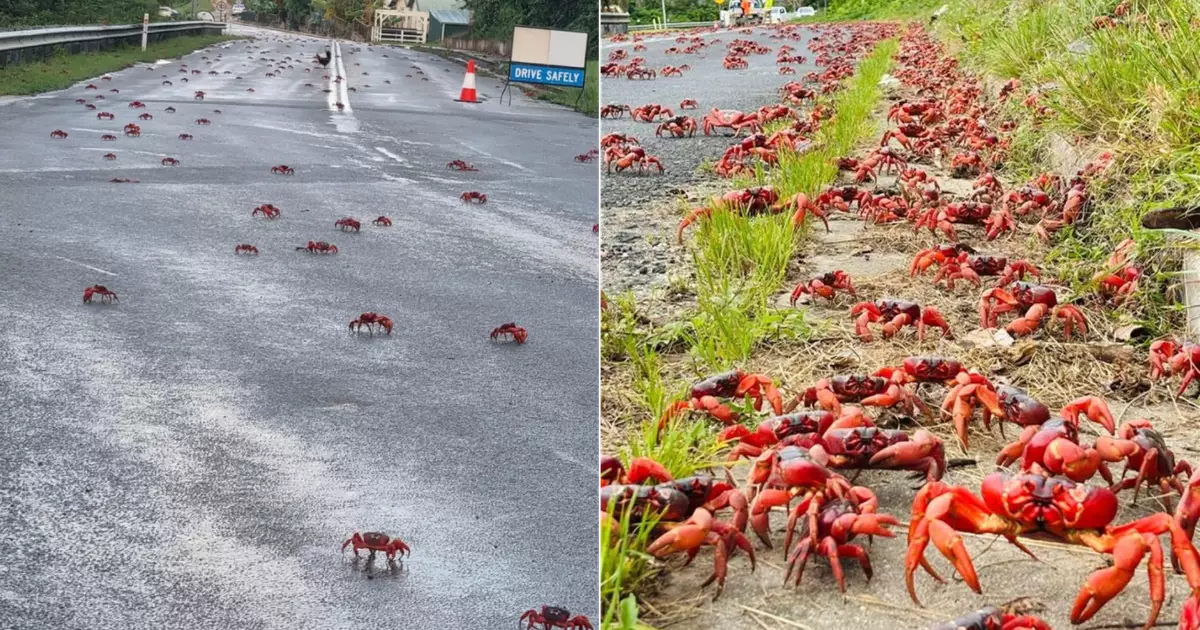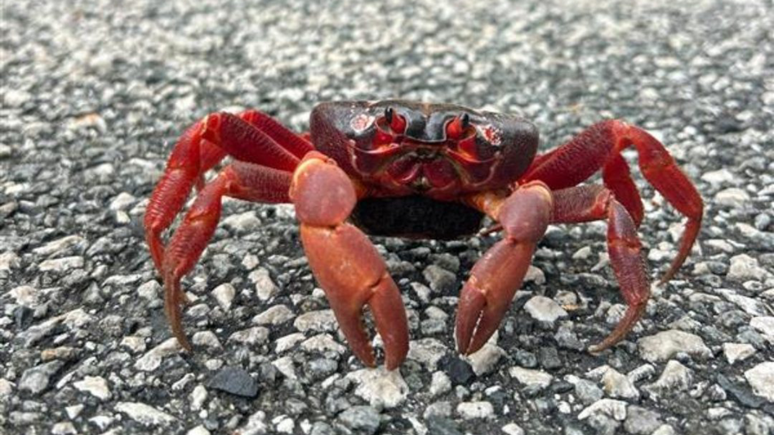
From October to December, millions of crustaceans from Australia’s Christmas Island leave their forests to spawn in the Indian Ocean.
summary
From October to December, millions of red crabs migrate from the forest to spawn on Christmas Island in the Indian Ocean, guided by the moon and assisted by fences, guards and conservation volunteers.
Every year from October to December, Christmas Island, an Australian territory in the Indian Ocean, becomes the stage for the largest crab migration on earth. 50 to 100 million red crabs (Natalis) leave burrows in local forests to spawn at sea.
A spokesperson for the Queensland National Parks Service said the phenomenon in question was closely linked to the waning moon phase. “Crabs with eggs emerge from their burrows and congregate on the shore, occupying shady areas above the waterline,” a representative explained in an interview with Yahoo News Australia.
“When the high tide begins to recede before dawn, the crabs enter the ocean, release their eggs, and return to the forest.”
But the journey is full of challenges for the crustaceans. Therefore, several measures have been taken in recent years to ensure the safety of animals. “Contact with vehicles is the most influential factor in crab migration, especially in the early morning and evening hours when most migration occurs,” the spokesperson explained.
The effort relies on a network of rangers who install crustacean-proof fencing, clean underpasses, and enforce traffic controls such as road closures, as well as a network of volunteers who “use garden rakes to move crabs out of the way,” he added.
Spawning takes about six nights to complete. Once the stage is complete, Red Crab will embark on a new journey back to the depths of the island. The journey usually lasts about nine days.
As for baby pups, a park representative reported, “Most years, the survival rate of pups is very low. However, once or twice a decade, a large number of pups live long enough to maintain a large population.”






